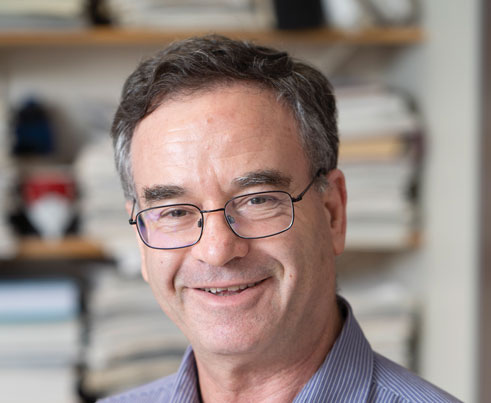Sabre Kais - 2019 Herbert Newby McCoy Award

Sabre Kais – 2019 Herbert Newby McCoy Award
Sabre Kais received his master's and PhD in chemical physics from Hebrew University. After a postdoctoral appointment at Harvard University, he joined Purdue University's Department of Chemistry in 1994 as an assistant professor. He became full professor of chemical physics in 2002.
Kais has made numerous important contributions to quantum theory and quantum computing. His current research includes quantum machine learning,
quantum algorithms, quantum entanglement, and adiabatic quantum computing.He has authored and co-authored four book chapters, more than 230 peer-reviewed articles, and made 155 conference presentations, including many invited lectures. He also has served on the editorial boards of several chemistry and physics journals.
Kais is former director of the National Science Foundation's Center for Chemical Innovation, Quantum Information for Quantum Chemistry, and has been the recipient of the National Science Foundation Career Award, the Purdue University Faculty Scholar Award, and the Guggenheim Fellowship Award. In 2007, Kais became an elected fellow of the American Physical Society and an elected fellow of the American Association for the Advancement of Science. In 2012, he received the Sigma Xi Research Award. He has courtesy professorship appointments in the Department of Computer Science and the Department of Physics at Purdue.
Quantum Information and Computation for Complex Chemical Systems
Abstract
New research is focusing on understanding chemistry from the viewpoint of quantum information — developing techniques and quantum computing algorithms for solving important problems in chemistry.
In his talk, Kais will give a brief overview of the recent advances in both hardware and software research in quantum computing. He will present the challenging problems in quantum computing for complex chemical systems, focusing on electronic structure and open quantum dynamics calculations. Kais also will discuss three related approaches to quantum chemistry calculations: the quantum circuit model, the adiabatic quantum computing model, and the quantum machine learning approach.
Research Accomplishments
Sabre Kais has made numerous highly creative and important contributions to quantum theory and quantum computing. These include the creation of novel quantum computing algorithms for chemical calculations and the formulation of finite size scaling algorithms for assessing the stability of atomic and molecular systems.
The following is a summary of Kais' most significant and recent contributions to the field of quantum information and quantum computation for chemistry:
- Quantum Machine Learning — Developed a hybrid quantum algorithm employing a restricted Boltzmann machine to obtain accurate molecular potential energy surfaces for simple molecular systems.
- Quantum Algorithms — Made significant progress on elucidating, optimizing, and implementing ground state energy algorithms — in particular, electronic structure algorithms on quantum computers. He also has developed quantum algorithms for solving Poisson's equation.
- Quantum Entanglement — Established that entanglement can be used as an alternative measure of the electron correlation in quantum chemistry calculations. He clarified the role of entanglement in quantum phase transitions, avian compass, photosynthesis, quantum computing with polar molecules and chemical reactions.
- Quantum Coherence — Developed a new quantum formalism to understand the role of quantum coherence in complex systems and used this strategy to prove that the efficiency of photocell can be greatly enhanced by quantum coherence. These results suggest a promising novel design of photosynthesis-mimicking photovoltaic devices.
- Adiabatic Quantum Computing — Made recent breakthroughs in the field of adiabatic quantum computing by developing an exact mapping between the electronic structure Hamiltonian and the Ising Hamiltonian which allow for the quantum D-Wave machine to simulate hundreds of connected spins (qubits) interacting with an Ising-type Hamiltonian.

